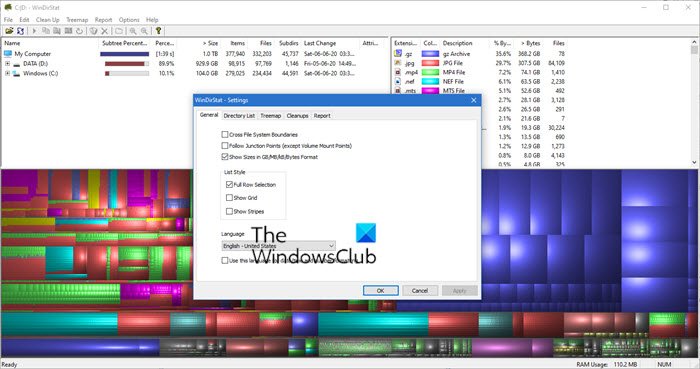
From WinDirStat you can navigate your system, see how your disk space is used and remove files that are needlessly taking up space on your disk. The rectangles have different colors, based on the type of the file.

The moment you launch WinDirStat, you will be asked to select a drive for the application to scan you can choose “All Local Drives” or “Individual Drives.” The application will then read your drives and, in very little time, it will present you with a directory list (similar to Windows Explorer), an extension list and a treemap.Īll your files and directories are depicted as a colored rectangle on the treemap. You can choose between a full installation, a custom installation, and two recommended installations (one with English only and one with all additional languages).ĭownloading and installing WinDirStat isn’t the only thing that can be characterized as speedy – using the application can also be characterized as such. A wizard will then guide you through the steps in order to install WinDirStat on your Windows –powered machine (any Windows version, from Windows 95 up to Windows 7). It’s a less than 1MB download, so it can’t take long, not even on a lousy internet connection. If you would like to add your download to the 4.2+ million ones mentioned above, you will be glad to find out that it will take very little time to download WinDirStat. Since then, the tool has been downloaded more than 4.2 million times and has become one of the most popular open source projects on SourceForge. In October 2003, version 1.0 of the graphical disk usage analyzer for Microsoft Windows was released to the public.

Since there was no similar tool for Windows at the time, Bernhard Seifert and Oliver Schneider set to work and came up with WinDirStat. It was back in 2003 that the developer Bernhard Seifert came across KDirStat, a KDE graphical disk-space analyzer for Linux, and he was fascinated by it.


 0 kommentar(er)
0 kommentar(er)
